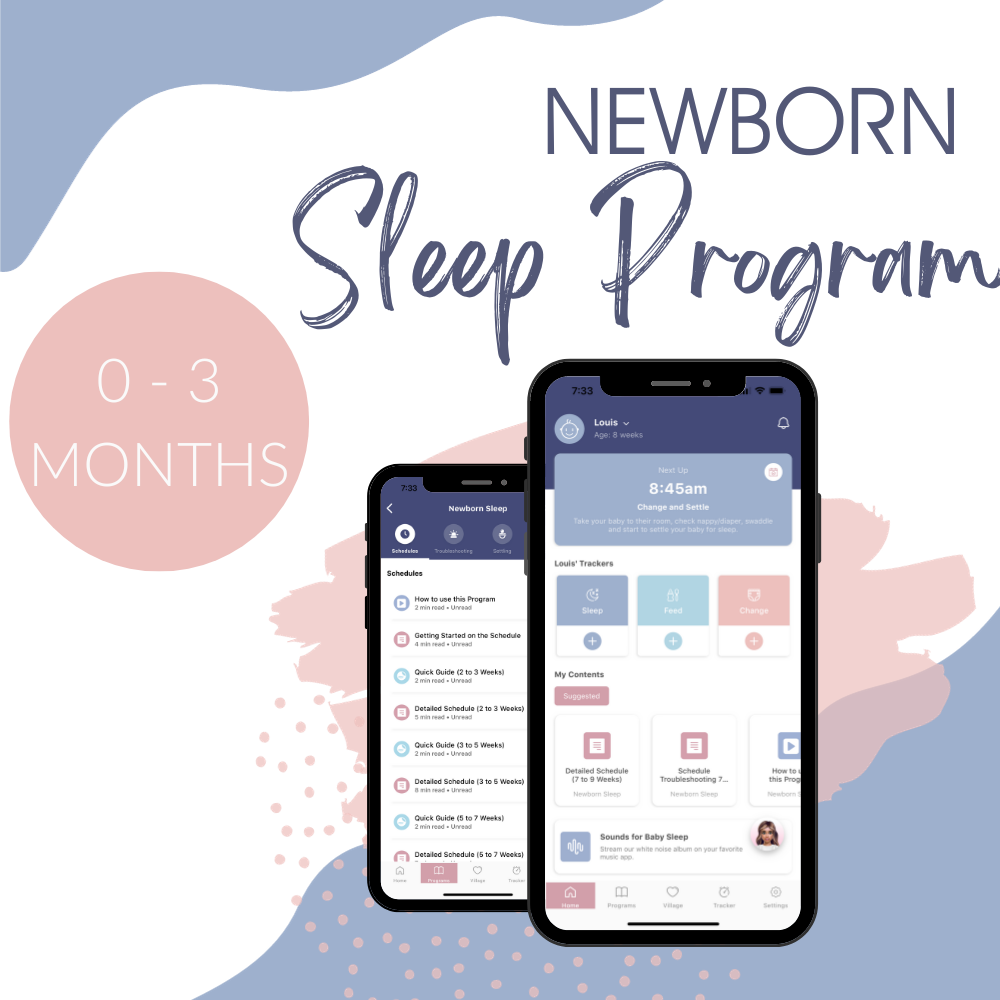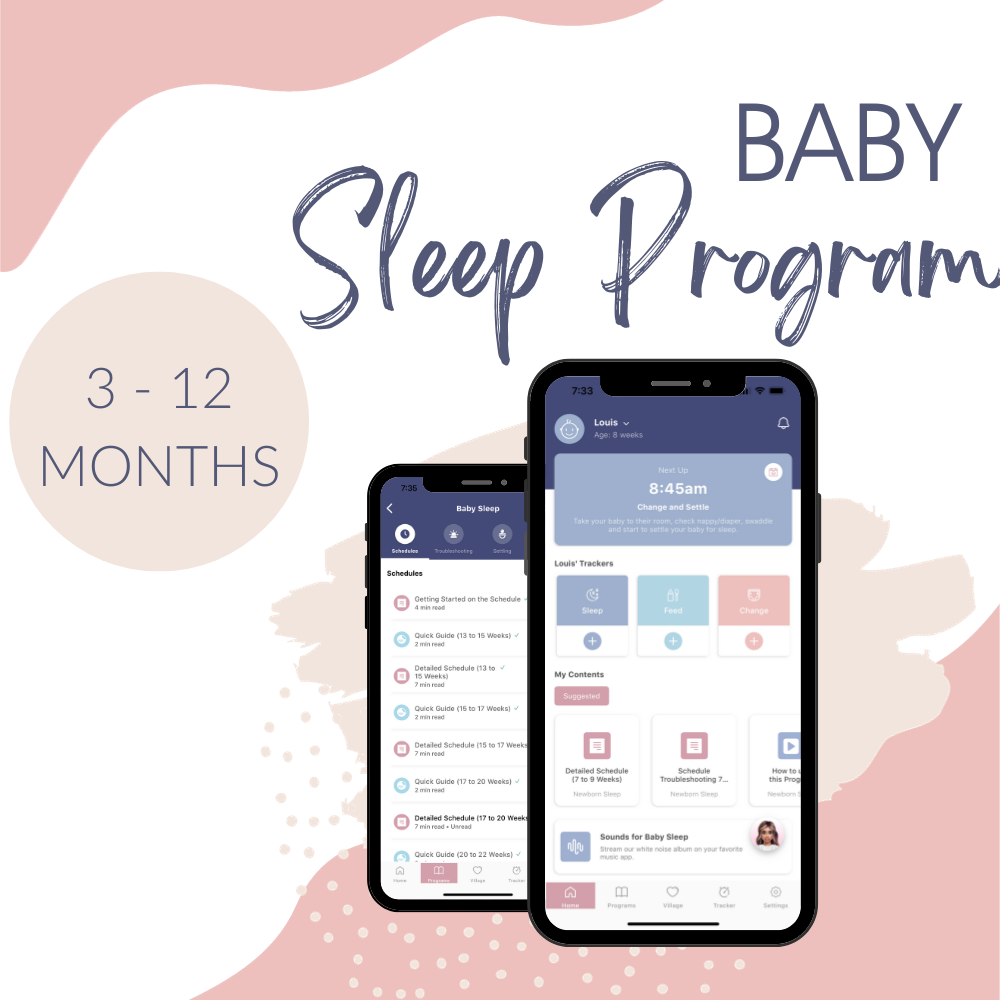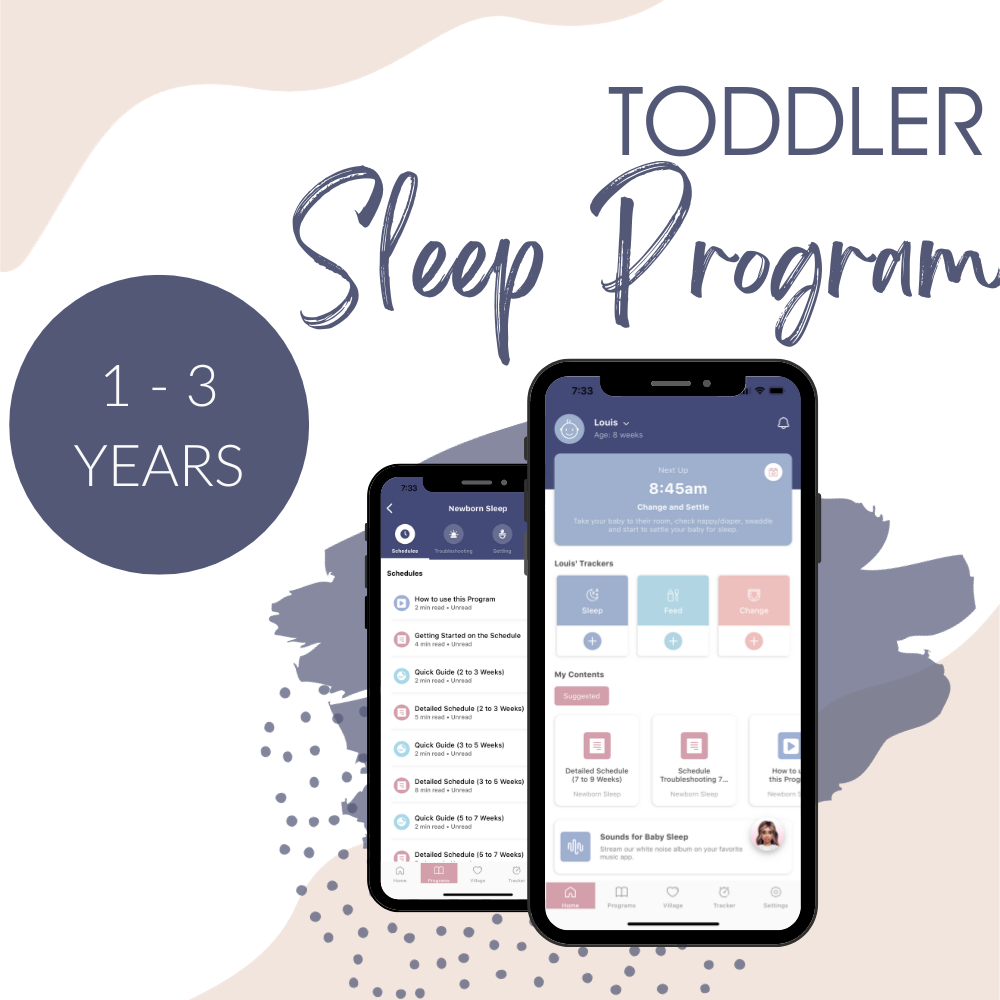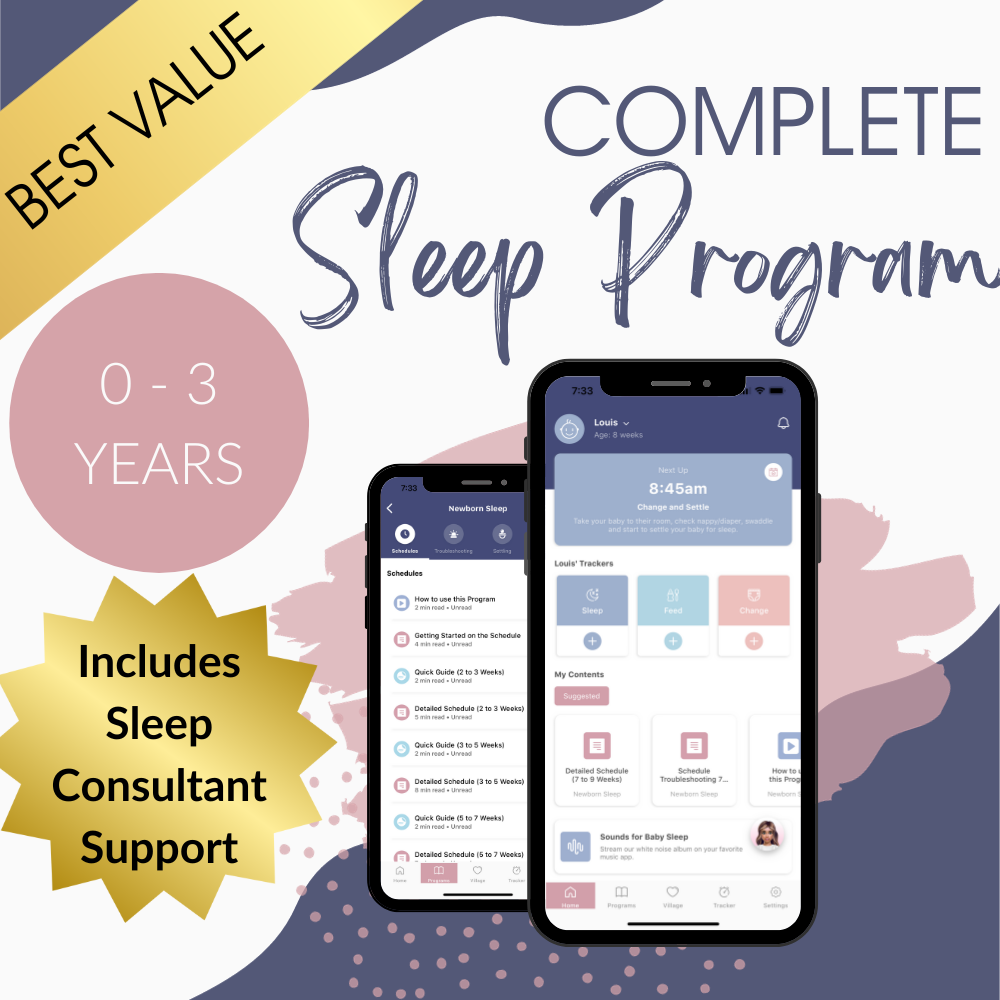
SELF-SETTLING. The truth.
Self-settling. This is a term most parents will be familiar with. It is a somewhat infamous term when it comes to babies, their sleep maturation and the ability for your wee one to sleep well or through the night. It is a term that is often misunderstood and sometimes even associated with hard-out regimented cry-it-out sleep training.
We’d like to share some information with you around exactly what “self-settling” means, the science behind your baby’s sleep behaviour and how you can manage this stage in your baby’s development.
In this article:
- What exactly is self-settling?
- When does self-settling become important?
- How does a baby learn to self-settle?
- Key things to remember when approaching self-settling
I want more sleep!
If you need a hand with tackling your baby’s settling and sleep, our Sleep Programs will give you big improvements in under 2 weeks.
Buy Now
What exactly is self-settling?
Put simply, self-settling refers to your baby’s ability to go from awake and alert, to sound asleep, without any help from you. Just like how you go to sleep at night.
At this point I would like to say that we by no means advocate that your baby MUST be able to self-settle at any particular age - each of us has our own tolerance level in terms of sleep and if you are happy feeding or rocking your baby to sleep then we are absolutely not here to question your parenting decisions.
On a similar note, I want to reassure you that you are not going to ruin your baby’s life if you don’t teach them to self-settle until they’re a bit older or until they naturally do it themselves. I can assure you that no 5-year-olds need to be rocked to sleep all through the night!
But some of us, myself 100% included, have very low breaking points when it comes to sleep and if you’re in the same boat as me, you will want to be doing everything you can to ensure your baby (and you) are sleeping well!
I learnt early on in my parenting journey that I am a sleeper - I need a lot of sleep in order to function on any acceptable level. My husband, IRONICALLY, is an insomniac and able to function on far less sleep than me. But it was super important to our family, to my mental well-being, to our relationship, and to my parenting, that I was getting enough sleep.
If you’re in the first boat and happy to go with the flow sleep-wise, this blog probably isn’t for you. If, however, you have reached the point where you’ve said “OK, enough is enough, where do I go from here?”, or if you’re simply curious as to how this magic “self-settling” stuff works, then READ ON!
When does self-settling become important?
Self-settling really only becomes important around the 4 month mark and beyond. Up until 3 months, it's fine to settle your baby all the way to sleep if needed - especially if they are overtired. At the same time though, you can foster good sleep habits by using a super dark room, loud white noise (get our Perfect Sounds for Baby Sleep - honestly, it's amazing!), swaddle or baby sleeping bag.
The idea is that once you set up those positive sleep associations, you will only be removing one of them - your assistance - when your baby needs to learn to self-settle. Since they will still have all those other things to positively associate with sleep, it will be a lot easier for them to fall asleep without your assistance. If your older baby is needing to learn to self-settle, establishing these sleep associations is a crucial first step.
If you have read our blog on the 4 month sleep regression you will know how a baby’s sleep changes at around the 4 month mark. The part of their brain responsible for sleep matures in a way that means they begin to fully wake between sleep cycles rather than drift through sleep cycles like they did as younger babies. This can mean your baby catnaps in the day (35-45 minute naps) and/or wakes every 2 hours overnight - particularly from midnight onwards. Until your baby can COMPLETELY settle themselves to sleep, without patting, rocking or feeding, they will continue to catnap and wake every couple of hours in the night because they will be looking for your help to go back to sleep every time.
If your baby has been encouraged to self-settle from a younger age, or you have been following the sleep and settling advice in our Little Ones App for a while, you could well coast through this stage in your baby's development. Older babies, whose sleep associations are more ingrained, will usually need a bit more help with learning how to self-settle and getting through this regression.
Say goodbye to sleepless nights.
Join over 300,000 families worldwide who are enjoying excellent sleep with our Sleep Programs, created by experts in the field of pediatric sleep.
Buy Now
How does a baby learn to self-settle?
We need to remember that over 4 months, the skill of self-settling becomes a cognitive ability and is something your baby needs to be guided to do, with consistency and perseverance. There are many methods out there, everything from leaving your baby to cry all night long (which we would never advocate!) to gradually reducing your presence or assistance day by day, night by night. We have several gentle methods (which vary according to your baby’s current sleep association and age) in our Little Ones App.
Like learning to read, self-settling is a skill that doesn't simply develop overnight. It is something completely new for babies, so it requires coaching, consistency and the chance to learn to do it themselves. If we give in and continue to settle them to sleep at the first grizzle, we’re denying them the chance to work on this new skill; which is not doing them any favours in the long run.
If you are in the middle of or contemplating some gentle self-settling coaching with your baby, it helps to remember that you are providing them with a crucial skill that will mean they are able to sleep well for years to come. Sleep is something that is vital to your little one's growth and development AND at the same time we are investing in our own sleep needs, for the benefit of our mental and emotional well-being as parents.
Key things to remember when approaching self-settling:
- Babies under 3 months aren't capable of any sort of traditional "sleep training" - the best you can do is to encourage good sleep habits at this age. If everything is lined up, some younger babies may instinctively self-settle to sleep.
- From 4 months you can gently begin to guide your baby to self-settling, as this is when it becomes a learned skill rather than an instinctual behaviour.
- You can expect a bit of protesting as your little one gets used to this new way of going to sleep, particularly if you have an older baby or toddler.
- A baby who is over or under tired will find it really hard to learn to self-settle. Our Little Ones App takes the guesswork out of when your baby is actually ready for sleep, and gives them the best chance at self-settling.
- Consistency is absolutely key - don't give your baby mixed messages by allowing them to self-settle some of the time then settling them all the way to sleep at other times.
- A dark room, white noise, swaddle (for babies under 5 months who aren't rolling yet) or baby sleeping bag are excellent, positive sleep associations which can greatly help your baby learn to self-settle.
- A hungry baby won't settle no matter what you do, so make sure they are well-fed and burped before putting them down for sleep.
- Have high expectations of your little one and work hard to achieve them. They CAN do it - and so can you!
Luckily babies are quick learners, meaning they can form new habits really fast. Depending on your little one's age and which method you’re using, it's entirely possible that your baby can learn the valuable new skill of self-settling in under a week - it really is up to you!
Let's get your little one's sleep sorted ASAP!Our award-winning Sleep Programs will solve your baby's sleep challenges in no time. Take advantage of our new low prices while they last!
Buy Now
___________
Bibliography
Dewar, G. (2018). Baby sleep patterns: An evidence-based guide. [online] Available at: http://parentingscience.com/baby-sleep-patterns/ [Accessed 4 May 2022].
de Weerth, C., Zijl, R.H. and Buitelaar, J.K. (2003). Development of cortisol circadian rhythm in infancy. Early Human Development, [online] 73(1-2), pp.39–52. doi:10.1016/s0378-3782(03)00074-4.
Gunnar, M.R., Talge, N.M. and Herrera, A. (2009). Stressor paradigms in developmental studies: What does and does not work to produce mean increases in salivary cortisol. Psychoneuroendocrinology, [online] 34(7), pp.953–967. doi:10.1016/j.psyneuen.2009.02.010.
Paul, I.M., Savage, J.S., Anzman-Frasca, S., Marini, M.E., Mindell, J.A. and Birch, L.L. (2016). INSIGHT Responsive Parenting Intervention and Infant Sleep. Pediatrics, [online] 138(1). doi:10.1542/peds.2016-0762.
St James-Roberts, I., Roberts, M., Hovish, K. and Owen, C. (2015). Video Evidence That London Infants Can Resettle Themselves Back to Sleep After Waking in the Night, as well as Sleep for Long Periods, by 3 Months of Age. Journal of Developmental & Behavioral Pediatrics, [online] 36(5), pp.324–329. doi:10.1097/dbp.0000000000000166.





